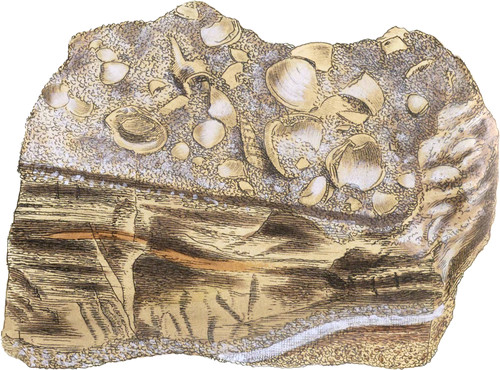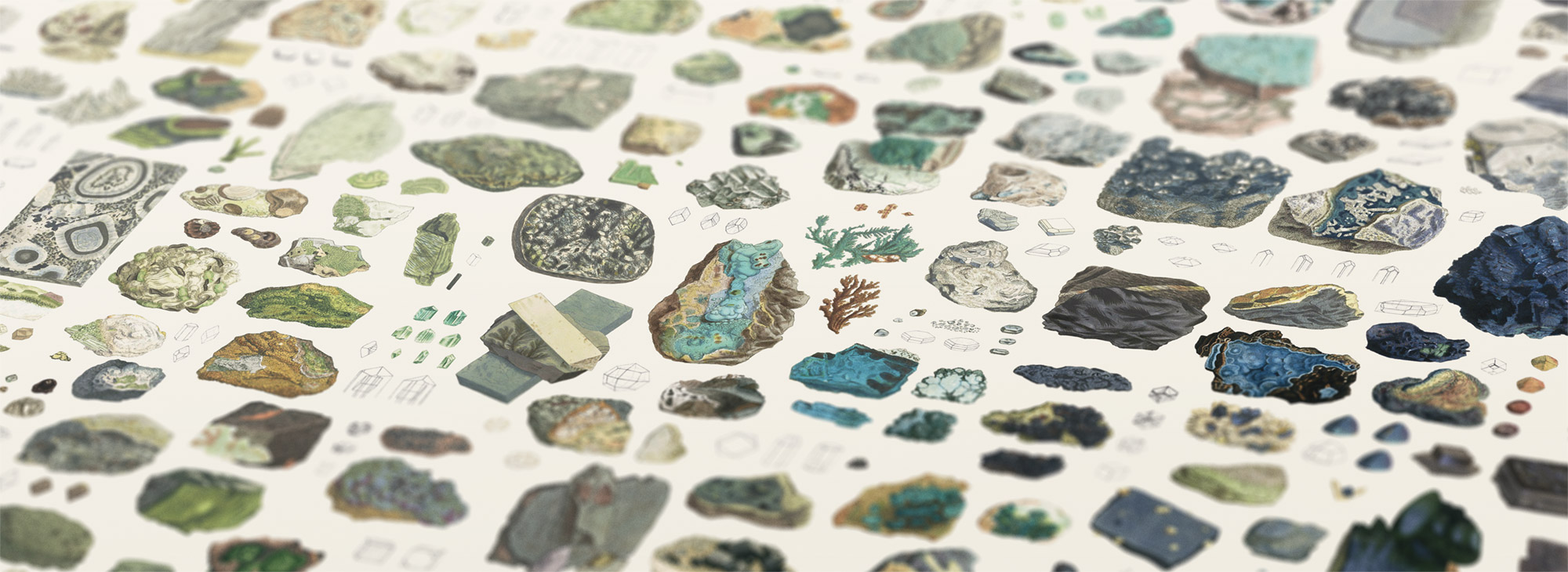 Enlarge
Enlarge
British Mineralogy
Flinty Roe-stone
- Div. 2. Imitative. Granular.
Ketton or Roe Stone (tab. 8), Oolites, &c. have been much noticed, and some conjectures have been advanced as to the origin of their form. I do not know that a similar appearance in Flint has been noticed in any previous publication;—it is as remarkable, and more difficult to account for than in Limestone.
The specimens figured, given me by A. B. Lambert, esq. V. P. L. S., came from Fonthill, where there is much variety of Flint arranged in strata with the Limestone: both are replete with many species of shells more or less mutilated; those in Flint are casts nearly filled up with a siliceo-calcareous mixture, or partly agatized (as some say) on the outside, and within flinty: between the two is often Carbonate of Lime, The granules, like those of the Roe-stone in outward appearance, are nevertheless rather more irregularly elliptical, and not formed one coat over another like an onion, as the grains of Roe-stone commonly are; they are of a gray colour, with a somewhat pearly aspect, and approach to Calcedony or Hydrophanous Cachalong: upon being wetted the surface becomes transparent, showing the darker inside: when dry, they are opaque and light gray again: they are nearly loose on the outside of the specimen, adhering more and more till they come to the solid flinty mass, with which they unite as a part, or are sometimes enveloped in the middle of it. The specimen has ochraceous striæ, more or less distinguishing the deposition of the whole in small drops or more copious fluid masses. I have a Green Jasper that has the little drops deposited on it like Roe-stone, but also without any appearance of a nucleus in them.
The fluid state of Silex is here very apparent, and it is as it were in different states of saturation, some subtly penetrating and displacing the Lime of the shells, while a partial solution deposits the small drops or roe-like particles, and again the larger mass seems to be a most copious deposit: this also is in the middle of a vein, while the outside has the granules with the shells as if loosely dispersed among them.

